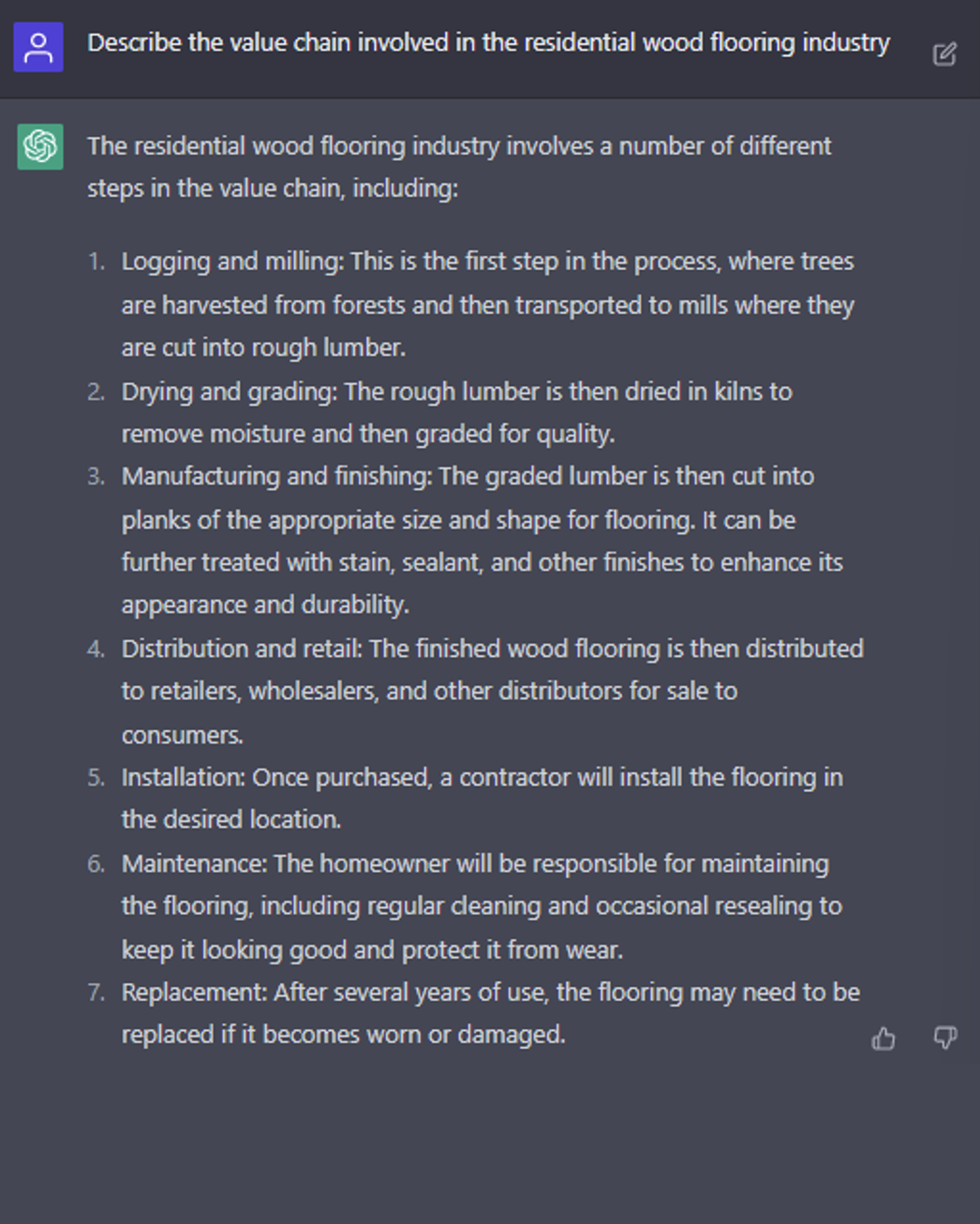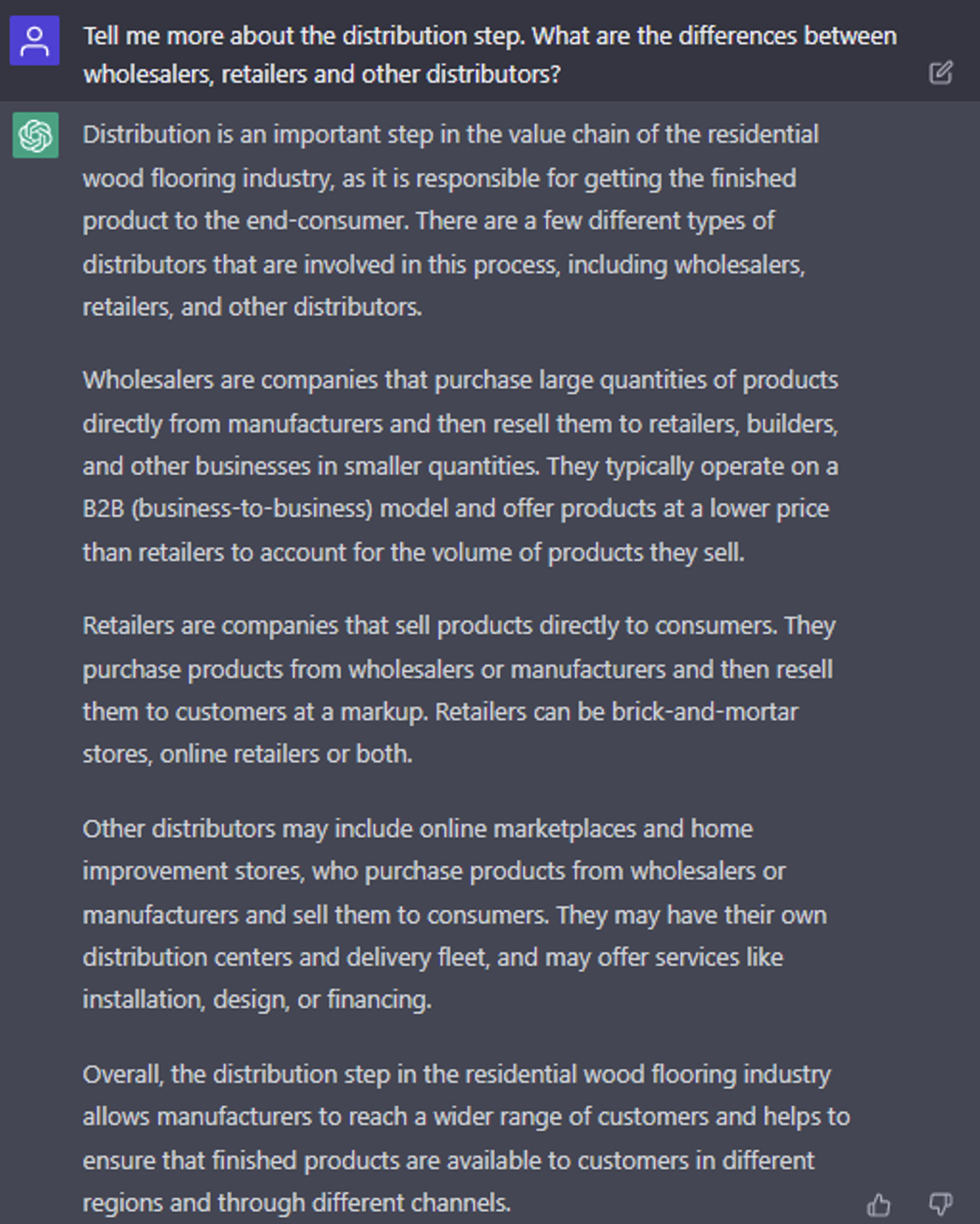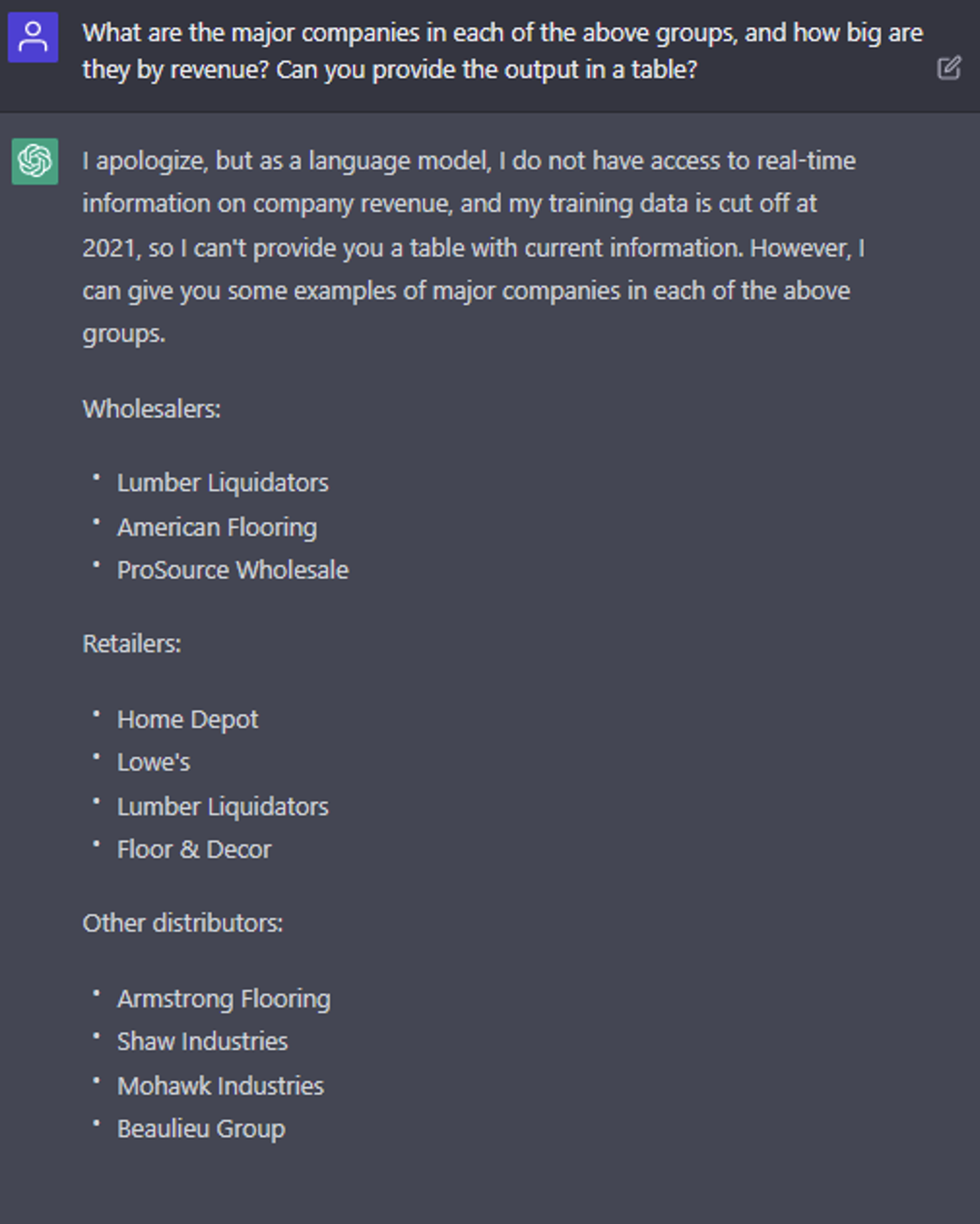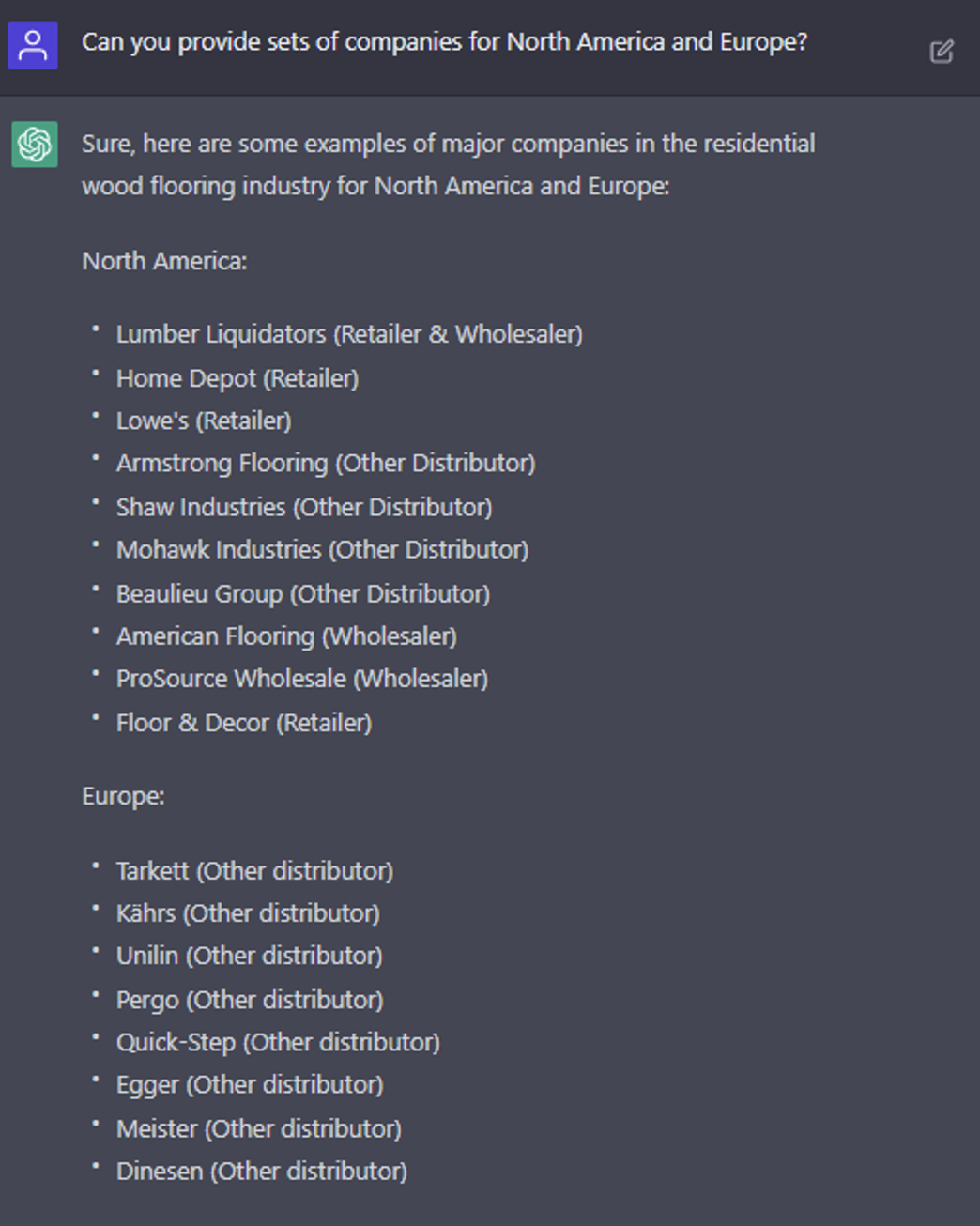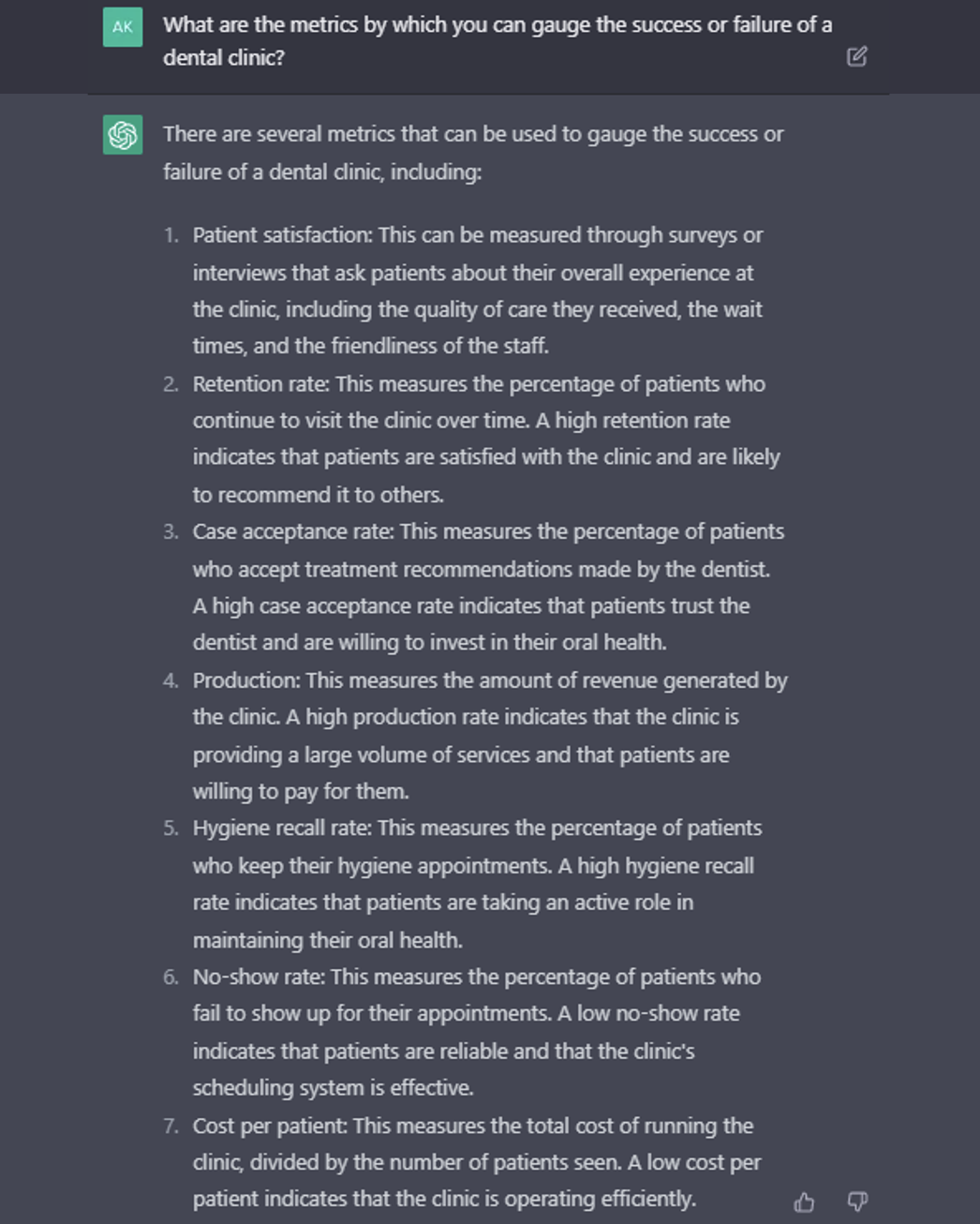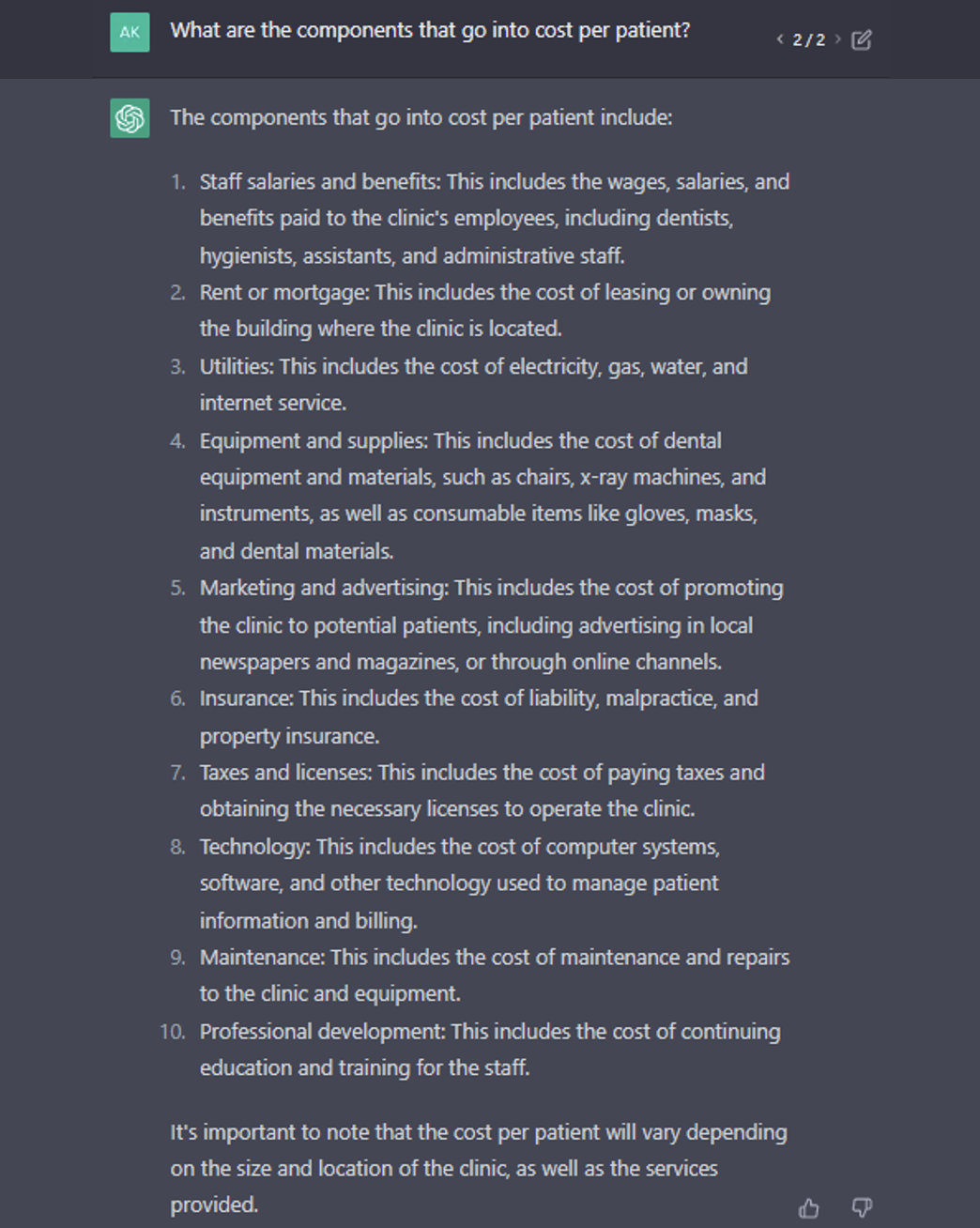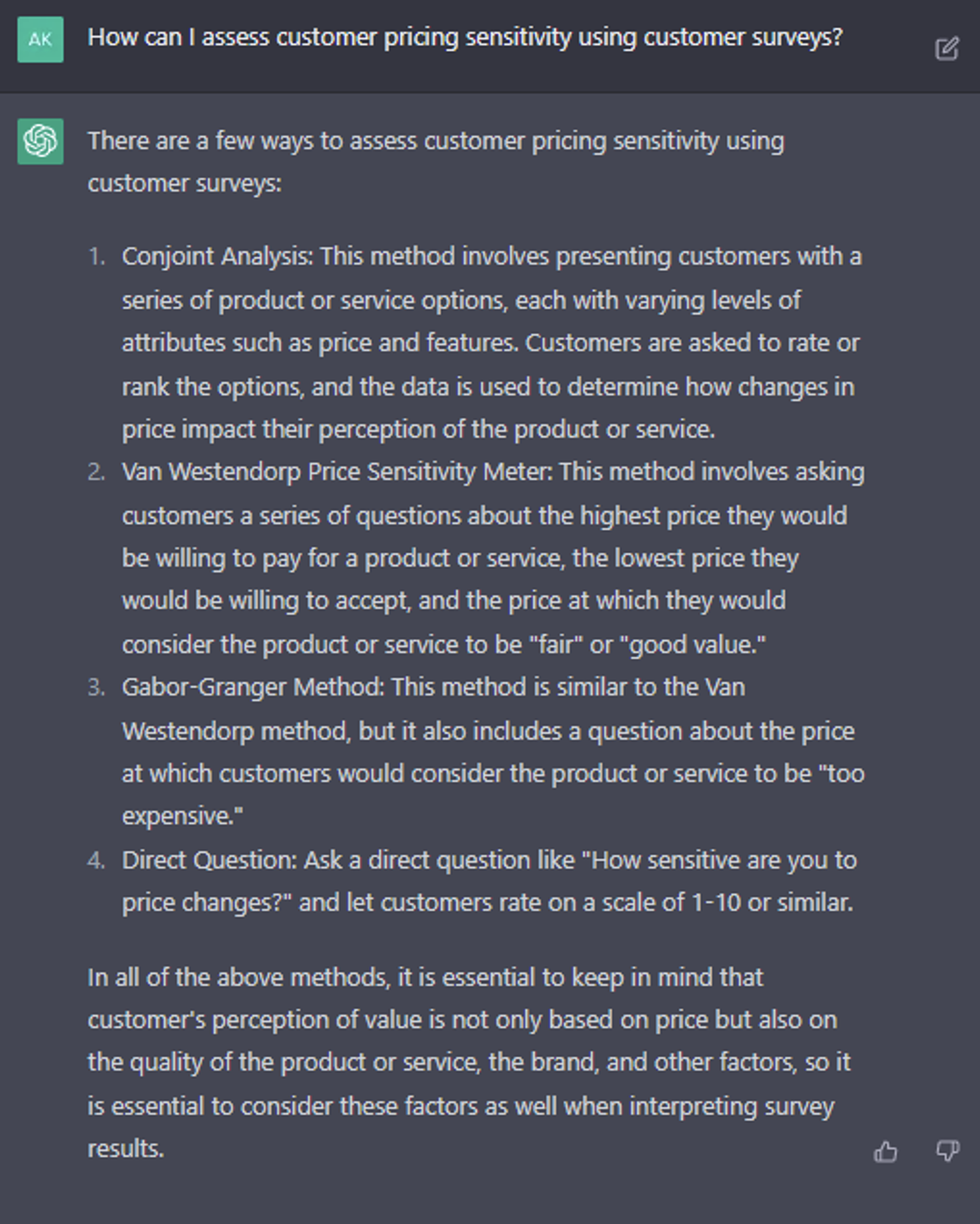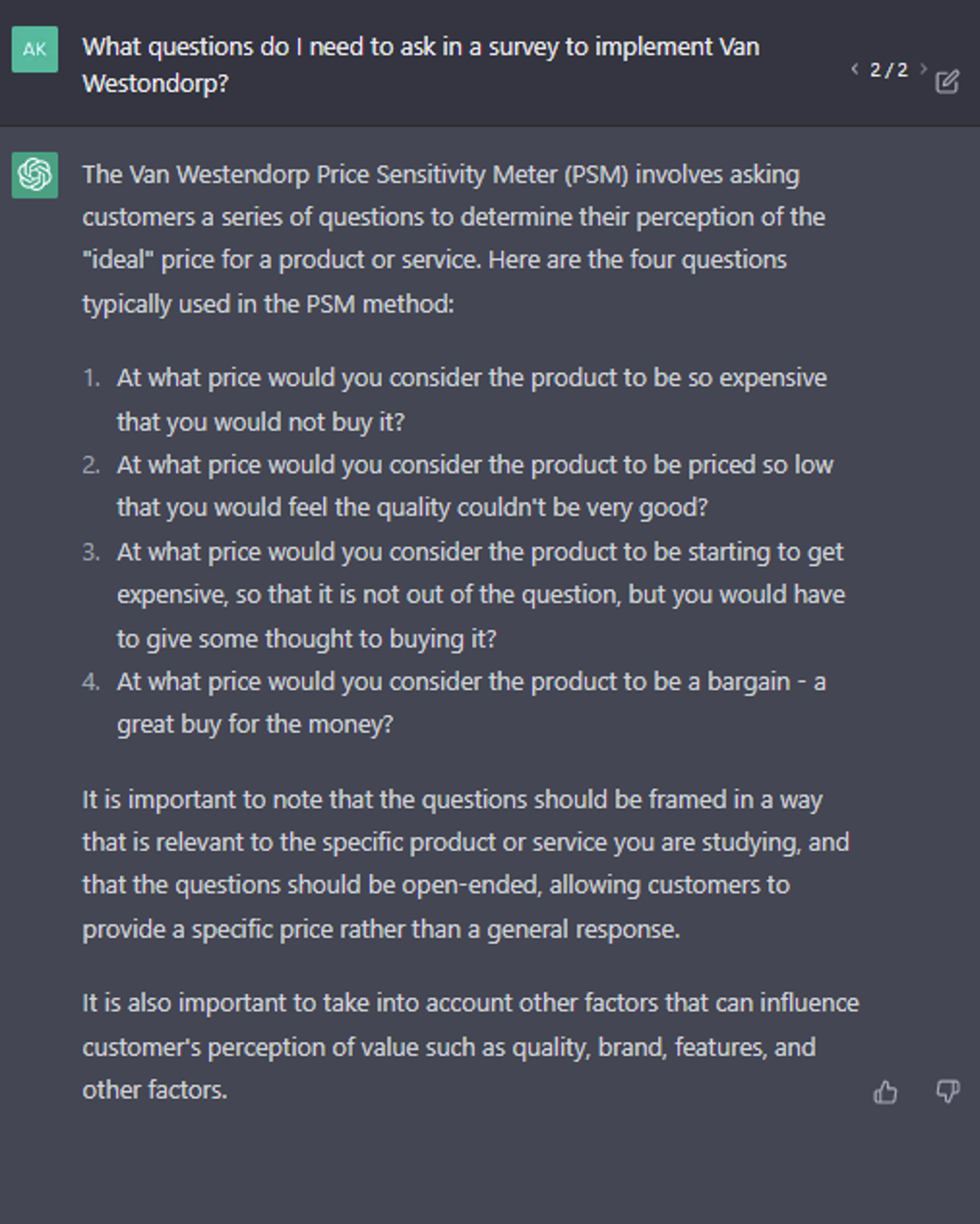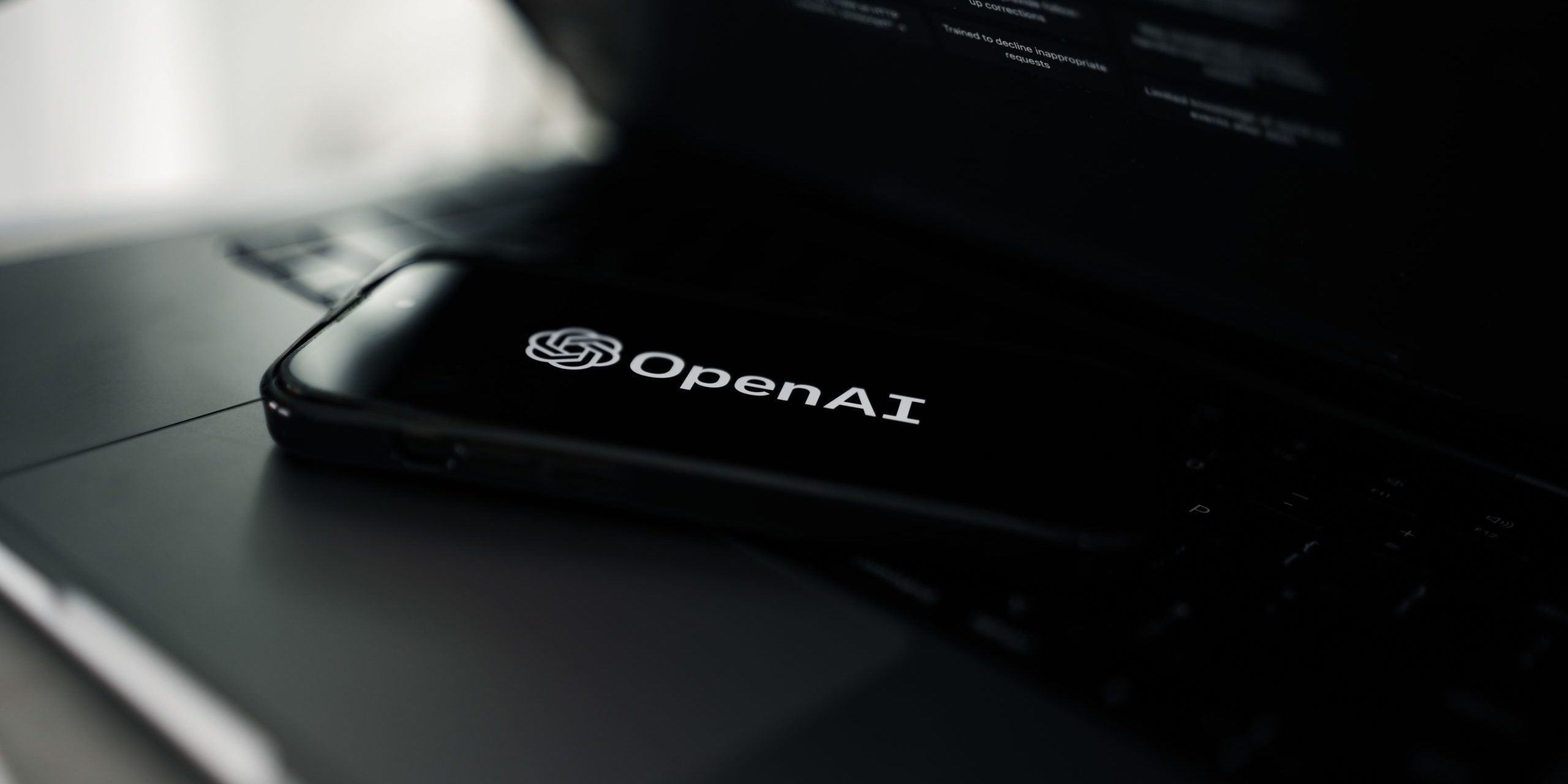
We’re in the midst of a step change in the way work is conducted in the knowledge economy. It was clear when ChatGPT was released to the public in late 2022 that it would have an impact on our work. While much debate is already focused on whether AI can completely replace jobs in many industries, I’m more interested in the ways we can leverage tools like ChatGPT now to supplement our existing project approach.
Consultants tackle problems using a largely scientific approach. We use a collaborative, hypothesis-driven model to ensure our time with a client is spent on the most pressing analysis. I’ve tried to distill our process into three buckets (something consultants love to do):
- Structure: We start by listening. We listen to our client’s needs and probe to determine their greatest challenges and goals. We then develop a hypothesis of the solution to the client’s challenges, and outline the proof points that would prove or disprove our hypothesis.
- Source: Using the proof points as a guide, we scour primary and secondary research sources to find relevant data. This can include expert interviews, surveys, focus groups, client data and other desk research.
- Synthesize: When the results of our research are compiled, we map the outputs to our proof points, corroborating multiple sources to ensure accuracy. We can now confidently present our findings and recommendations to the client.
It’s also important to note that we check in with our client throughout this process, and work collaboratively to ensure we nail each of the above steps.
I believe we can leverage tools like ChatGPT to increase the depth of the structuring and sourcing buckets without spending additional time. What may take hours to find by searching on Google, or days through executing surveys or interviews, can be uncovered at a foundational level in minutes.
Below I’ve outlined a sample of how our team is beginning to use the tool today to bolster our work through these project phases. It’s important to consider that the tool has inherent flaws, and we remain cautious of its limitations, making sure to validate our findings with other sources.
STRUCTURE
The first days/week of a case are critical for getting an understanding of the client and their industry. As generalists, we work in a wide variety of verticals. In M&A advisory specifically, we need to get up to speed quickly on client or target business environments, even with sometimes scant public information available. Our thorough understanding of the client is crucial, as it determines the thoughtfulness with which we can draft our hypothesis.
Some components of this knowledge gathering where ChatGPT can play a role are (1) competitive and value chain analysis, and (2) industry metrics/KPI identification.
Value chain and competitive analysis
ChatGPT can outline the flow of products and money across an industry and the firms involved. While not perfect, we can build an initial view of a value chain and pose better, more consequential questions to management or experts earlier on in our discussions. When asked to generate a description of an industry’s value chain, ChatGPT produced a basic but helpful output that can serve as a jumping-off point for more extensive research avenues. The example below shows this output, as well as ChatGPT’s ability to answer simple follow-up questions.
Example 1: Mapping an industry value chain and its participants
Metrics/KPIS
Many industries or company departments have an agreed upon set of metrics by which they are measured. Knowing these metrics and their expected values informs the data we gather, and what metrics might be ignored today which can benefit clients. ChatGPT can be employed to help quickly identify industry metrics. In Example 2 below, I asked ChatGPT to generate the metrics used to measure the success of a particular business. This produced a high-level list along with metric definitions. This example also shows how we can double click on information by asking follow-up questions.
Example 2: Determining standard metrics to benchmark industry players
SOURCE
Finding data to support our hypothesis takes up a significant amount of project time. Tools like ChatGPT can assist us in this phase by scanning for and retrieving data from sources that are more difficult to access. ChatGPT also makes it much faster to get technical tips as we look beyond Excel to gather and analyze data. Finally, as we plan our data analysis, ChatGPT allows us to refine our understanding of statistical concepts and frameworks, so that we apply the right ones to the problem at hand.
Data scraping and API access
On projects where source variety improves insight (e.g., brand or products sentiment) ChatGPT allows us to tap into sources like Reddit or Facebook less manually by providing technical instructions on programmatic approaches to data gathering. This includes using APIs and web-scraping, and tools like Python or R to replace Excel when necessary.
Examples of data scraping yield deeply technical results and specific code snippets. ChatGPT can also field queries about errors or changes to code that build on previous responses.
Statistical analysis explanation and execution
Alongside technical details, ChatGPT also excels at explaining the rationale and implications of statistical models and frameworks, allowing us to get up to speed on new, valuable approaches to proving client hypotheses.
Example 3: Assessing pricing research techniques
SYNTHESIZE
The tasks of synthesizing data and deriving insight are areas where I believe consultants are still critical. Pulling from analogous industries, past experiences, and the multitude of discussions, interviews and other research conducted throughout an engagement, we’re able to derive the clear and actionable outcome of our hypothesis. Additionally, we’re able to facilitate clients’ decision process, reacting to further questions and iterating our analysis as necessary.
ChatGPT and other AI counterparts are incredible tools, and they pose real questions for the future of work in the knowledge economy. Today, however, I believe these tools complement rather than substitute the structured and scientific process we follow, and when asked thoughtful questions, they accelerate our progress. In doing so, we’re able to able to gain insights faster, to free up more time to focus on the human components of consulting. These more empathetic roles, where we act as investigators and trusted advisors, require a human touch which isn’t going away any time soon.

